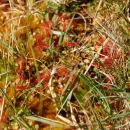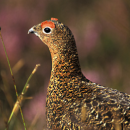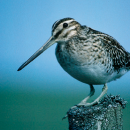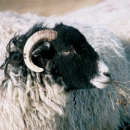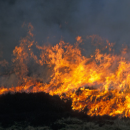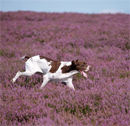Sheep have grazed the moors for hundreds of years. Hardy Swaledale and Cheviots provide sturdy breeding stock. Crossed with other breeds, and lambs fattened on lower lush pastures, moorland sheep play a vital role in our foodchain.
It is important that grouse moor managers work closely with farmers, commoners and graziers to strike the right balance on this sensitive land. Grouse and sheep each need the best nutrition they can get from upland heath and blanket bog – without damage or domination.
The vast, wild areas allow resilient sheep, and increasingly cattle, to graze and breed, supported by generations of knowledgeable hill farmers and their families in remote rural areas.
Making sure this land meets the sometimes conflicting needs placed upon it, MA liaises closely with the National Farmers Union, Foundation for Common Land, Tenant Farmers Association and Government agencies on approaches and policies that can work for everyone. The ownership of land and the rights upon it are notoriously complex in the uplands requiring exceptional levels of collaboration, especially on commons.
Compromises have to be made to meet the demands for clean water, flood risk and wildfire mitigation and carbon capture. They have to be reconciled with maintaining a beautiful landscape for all to enjoy, as well as being hard working living landscapes for people and wildlife.
Close co-operation is crucial when carefully controlled heather burning and/or mowing takes place. This encourages diversity across the moors, helps spread out grazing sheep and boosts important fresh, nutritional growth of grasses and shrubs.
Sympathetic grazing helps control the rate of vegetation growth, working in tandem with best-practice burning and mowing. Sheep also have an invaluable part to play in dealing with ticks. They act as ‘tick mops’ and the harmful insects can be dealt with before going on to infect ground nesting birds, whose treatment is impossible.
Mopping up ticks, the sheep also help protect human visitors from Lyme disease and other debilitating diseases, which are on the increase. In July 2020, Public Health England also confirmed the diagnosis of a case of babesiosis and a probable case of tick-borne encephalitis (TBE) in England. This was the first record of a UK-acquired case of babesiosis and the second case of TBE being acquired in the UK.
There are many benefits to moorland managers and farmers working together. Access routes created for grouse management have been a significant boost to hill farmers, allowing them to reach previously inaccessible areas. Striking the right balance between the different user groups is essential.
By working together conflict can be avoided. Designated routes for walkers, dogs on leads and interpretation information are all useful, particularly at critical lambing and bird nesting time from March 1 to July 31. The nationally recognised Countryside Code is a good example of such collaboration.
Two case studies in the report Better Outcomes for Upland Commons highlight Danby Moor, in the North York Moors, and West Arkengarthdale, in the Yorkshire Dales, as excellent examples of partnership working.



